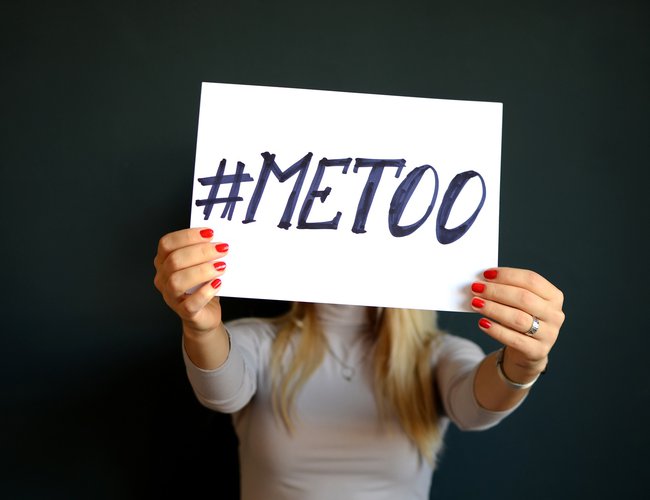
The effect of the MeToo movement, which started in USA almost two years ago with the Hollywood Mogul Harvey Weinstein in October 2017, is now worldwide. One result of hashtags on social media is that it has recently become almost universal. It started in various parts of India and re-reached Hollywood in October 2018 and then on to Nepal. The harassment of women is not new but what brought it to the forefront was a news report that a Maths teacher at a Lalitpur Secondary School had been sexually abusing young girls for decades. Reports from other schools followed. The trafficking of women to the red light areas of Indian cities has been existent for long. Because of new regulations the process is changing to new routes as through Myanmar, It has been known for ages that families resorted to such measures because of poverty. Sadly this is not restricted to Nepal but also in many countries because of poor economy. Thankfully Maiti Nepal is active against this.
Another happening in Nepal is that young girls and even mothers undergoing menstruation are made to spend four days in chaupaddi huts, where some have even died is inhuman. It is not surprising therefore to imagine that many uneducated persons in rural areas of the country rape minor girls and even kill them. What needs to be done to do away with such practices in Nepal?
The saga of women’s rights has a long history. New Zealand was the first country to grant women the right to vote as early as 1893, British Suffragette Emily Pankhurst started her movement in 1903 but the right to vote was first given to women over 30 years, only in 1918 following the end of World War I. A century having passed, there is now 32% representation in a parliament of 650. Surprisingly women in Switzerland only got the right to vote in Federal elections as late as 1971!
Plight of women exists in many Muslim countries worldwide. Women are made to wear burkas so that males may not ogle at them. Fine, but why is it that the colour of women’s burkas is black or brown which absorbs the suns heat whilst the dress of the man is white which reflects the suns heat and does not cause discomfort. Is this not discriminatory?
A recent book ‘”Good and Mad’ by Rebecca Traister is creating ripples in the USA. The author feels that there has been some sort of uprising of women against the bossing by males every fifty years. She has referred to Rosa Parks’s action of 1955 when she refused to vacate her seat in a bus. Also to Betty Friedan, whose book ‘The Female Mystique’ had started a wave of feminism in the USA. Now it is almost a “Hear me Roar” outcry by the women. Social structure is currently unfavourable to women in the USA.
Many feel that all this has occurred in USA because of the general trend for women there to fight for their rights. There are now a record number of 171 women in the US Congress. The entire newly elected members to Congress were dressed in white and created a white front in the visuals of the President Trump’s State of the Union Address. The hope is that there will be still more women members following the next elections in 2020.
In Nepal this journey may be stated to have started with the Bhojpur born Yogmaya Neupane, who was frustrated with the then existing Nepali society. Her fight was against child marriage, and various other wills in connection with which she made a plea to PM Joodha Shumsher in 1936. Getting no response she together with 66 followers committed mass suicide in the Arun river.
Mangala Devi Singh of Nepal Mahila Sangh was a lady who strove for women’s rights in the Panchayat era. Nanimaiya Dahal became a seven day wonder against the then existing Nepali governance. Subsequent women leaders of Nepal such as Sailaja Acharya and Sahana Pradhan were also prominent but have not left behind much heritage. Though President Bidya Devi Bhandari, House Speaker Onsari Gharti Magar and Chief Justice Sushila Karki have all reached apex positions the public reaction to their feats varies in the population. The search for Nepal loving women leaders is still on.
In retrospect however one must note the fact that women have had a special place in our religious thinking. A large number of girls in various towns of Nepal have been Kumaris and worshipped, albeit for a number of years as deities. In former days, following menstruation they became almost outcasts – without education and no chance of marriage as it was believed to bring bad luck. Is this the reason that the chhaupadi practice still prevails in Nepal? Our annual festivals of Dasain and Basanta Panchami are homage to female Goddesses. A point to note is that the temples to the different female deities are scattered all over the country.
Womens’s Day celebrations have become a part of Nepali life but one has to remember that Teej, aka a festival for the women in certain sections of Nepali society has existed over the centuries. This year’s Nari Divas has come and gone, but what has been achieved.
The rapes and murders of teenage girls is still reaching greater heights day by day. One wonders at the number of incest cases and rapes by relatives that go unreported. Is this moral turpitude, a by-product of modern times? In terms of women’s rights there have been demonstrations in cities of Nepal. Young girls are asking – “Womb is mine. Whose child is it” in connection with the fact that the law on citizenship, on the basis of one's mother is still to be passed. Women parliamentarians have still to fight for other issues as abortion, maternity leave, child benefits and equal pay.

Hemang Dixit
The author writes fiction under the name of Mani Dixit. Website: www.hdixit.org.np. Twitter: @manidixithd
- Top Heavy
- Sep 20, 2023
- Most Able?
- Sep 04, 2023
- Changing Times
- Aug 21, 2023
- Nepali Shenanigans
- Aug 03, 2023
- Budget Naataks
- Jun 29, 2023












